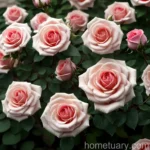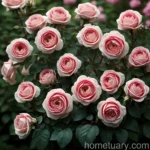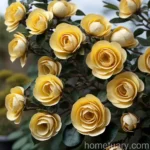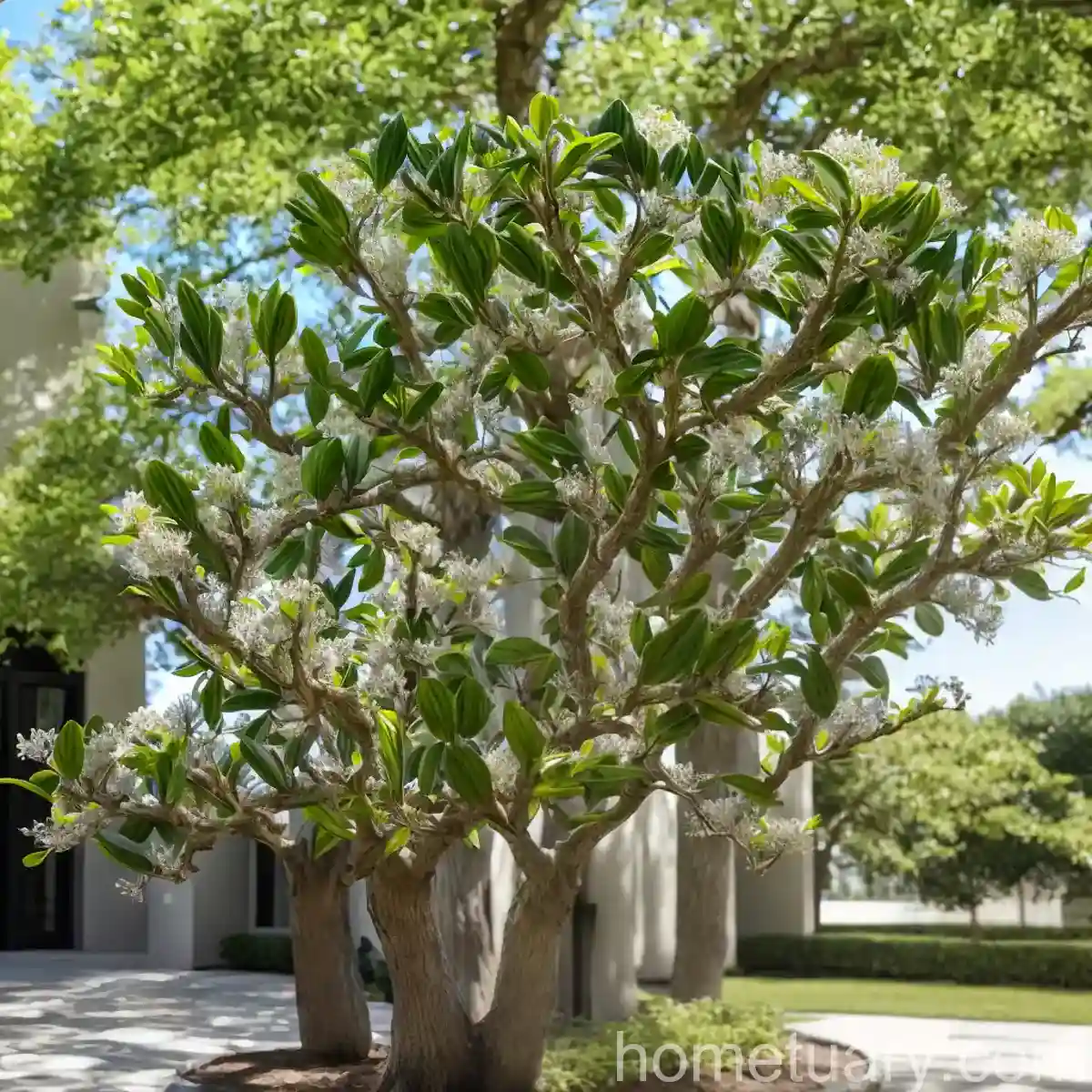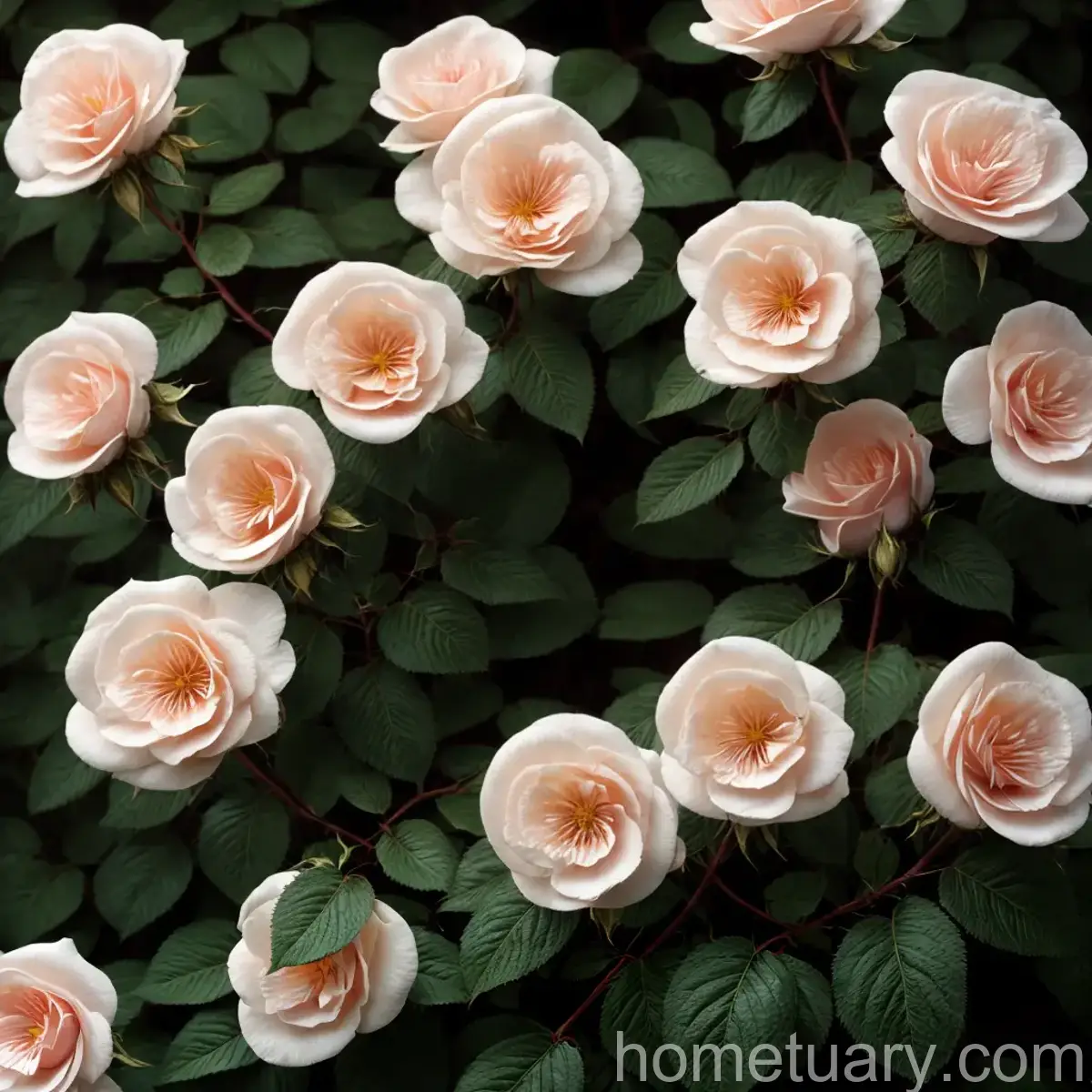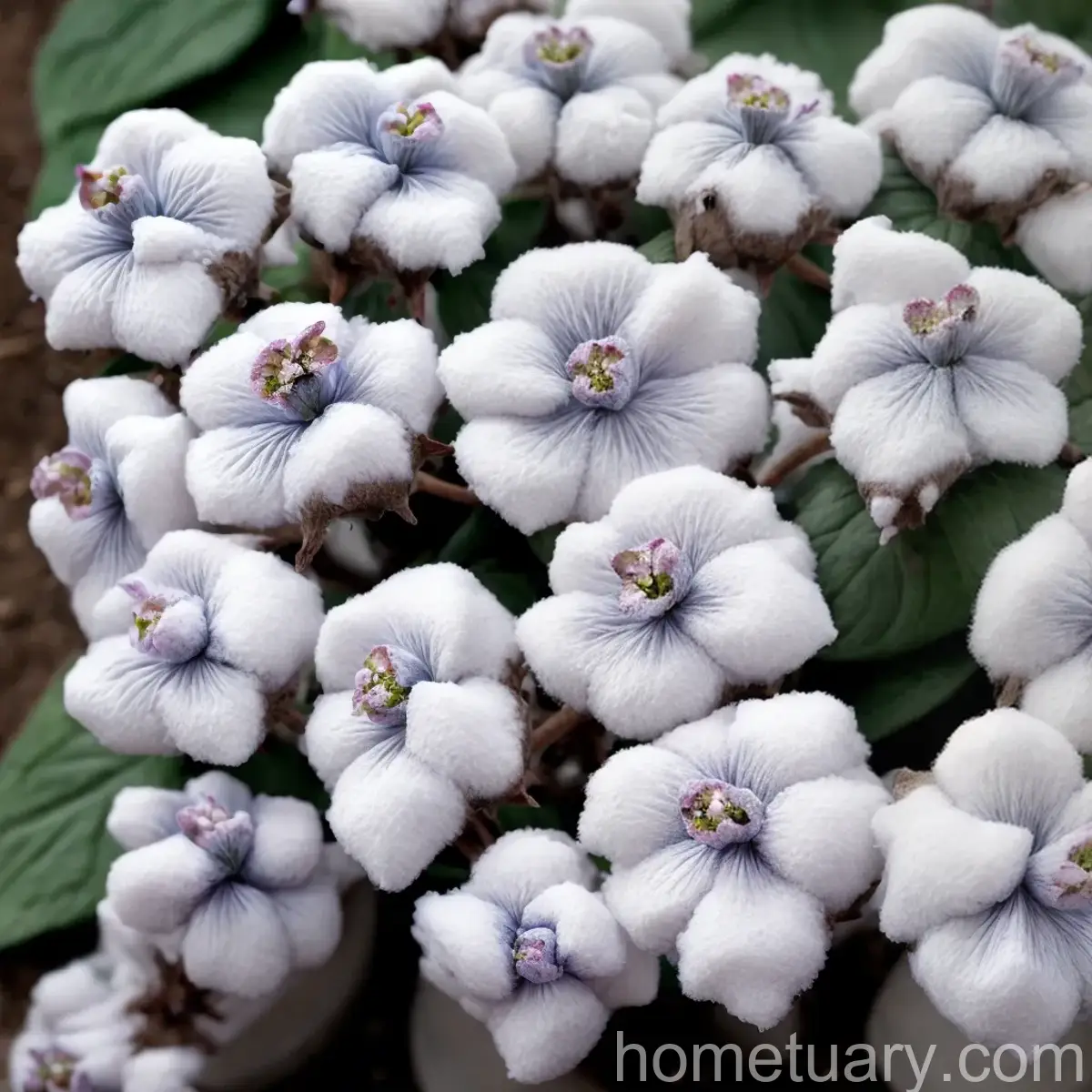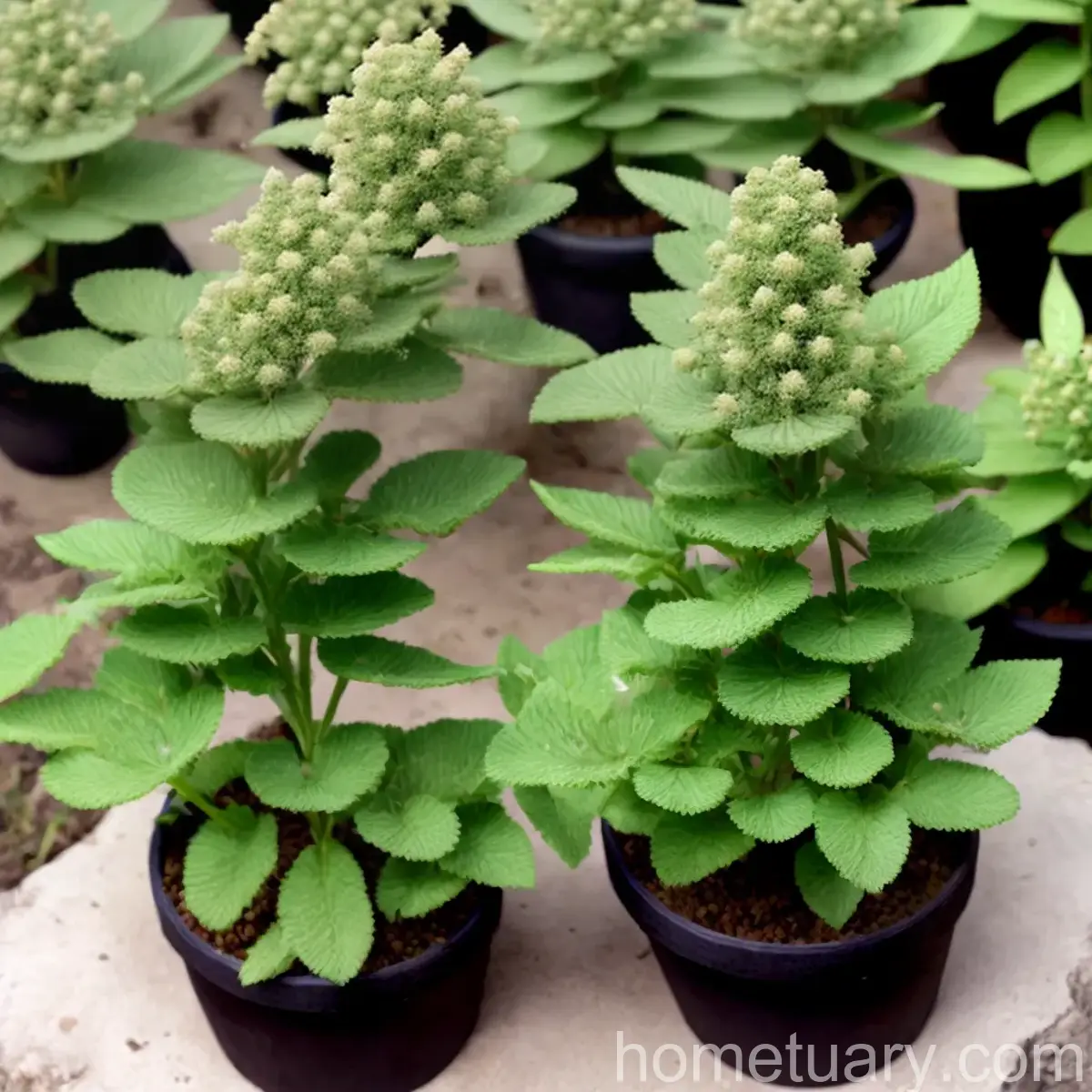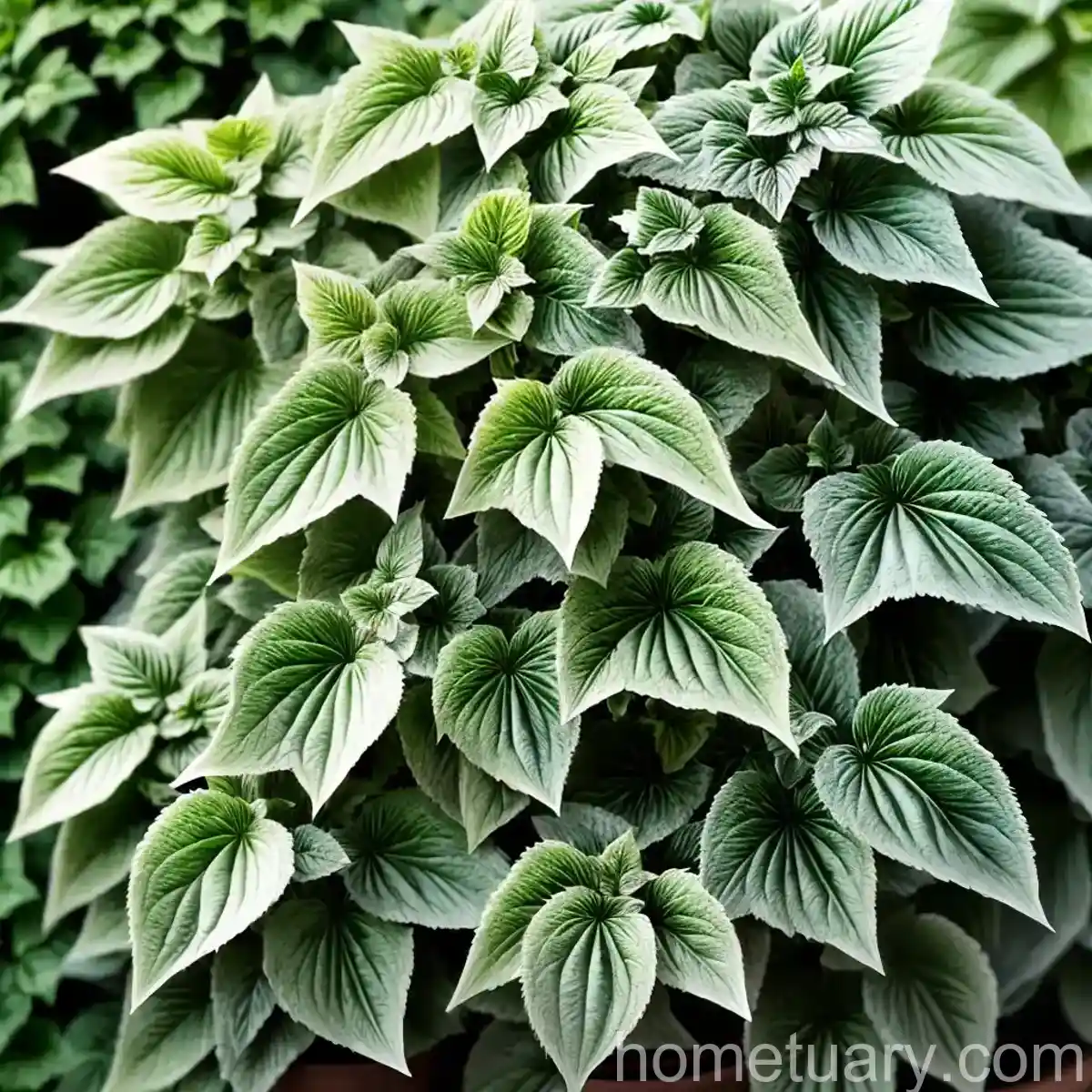The Beautiful Hybrid Wichurana Rose (Rosa ‘Bobbie James’)
When it comes to gardening and landscaping, roses have always held a special place. Its beauty, versatility, and fragrance have made it a favorite among many plant enthusiasts. Among the numerous rose varieties, the hybrid wichurana rose, scientifically known as Rosa ‘Bobbie James’, stands out for its stunning characteristics and easy maintenance.
In this comprehensive guide, we will delve into the world of the hybrid wichurana rose, exploring its key features, care requirements, propagation methods, common diseases and pests, as well as fun facts and tips from botanists. Whether you’re a seasoned gardener or just starting out, this guide will equip you with the knowledge needed to grow and care for the exquisite Rosa ‘Bobbie James’.
What is the Hybrid Wichurana Rose (Rosa ‘Bobbie James’)?
The hybrid wichurana rose, Rosa ‘Bobbie James’, is a vigorous climbing rose that belongs to the genus Rosa and the family Rosaceae. It is recognized for its lush, cascading foliage and abundant clusters of fragrant, white, semi-double flowers. This particular rose variety is celebrated for its versatility, making it a popular choice for adorning fences, trellises, and various garden structures.
Key Takeaways – Hybrid Wichurana Rose (Rosa ‘Bobbie James’)
Before we delve deeper into the intricacies of caring for the hybrid wichurana rose, let’s take a quick look at the key takeaways regarding this enchanting plant:
- Common Name: Rosa ‘Bobbie James’
- Type: Hybrid Wichurana Rose
- Characteristics: Vigorous climber, abundant semi-double white flowers, cascading foliage
- Uses: Ideal for decorating fences, walls, and trellises
- Water: Moderate watering
- Sunlight: Full sun to partial shade
- Fertilizer: Balanced fertilizer in the spring
- Soil: Well-draining, fertile soil
- Pruning: Minimal pruning required
- Propagation: Softwood cuttings, layering
- Container: Suitable for growing in containers
- Popularity: Widely admired for its ornamental value
- Common Diseases: Black spot, powdery mildew
- Common Pests: Aphids, spider mites
- Botanist’s Tips: Ensure good air circulation, provide sturdy support for climbing, prune after flowering
Now, let’s explore each of these aspects in detail to understand how to nurture and appreciate this stunning climbing rose.
Culture of the Hybrid Wichurana Rose (Rosa ‘Bobbie James’)
Uses
The hybrid wichurana rose, Rosa ‘Bobbie James’, is primarily utilized for its ornamental value. Its vigorous climbing habit and profusion of white blooms make it a stunning addition to any garden or landscape. It is often employed to adorn fences, walls, arbors, and trellises, adding a touch of elegance and romance to outdoor spaces.
Water
Proper watering is essential for the healthy growth and flowering of the hybrid wichurana rose. While it is essential to ensure an adequate water supply, over-watering should be avoided to prevent waterlogged soil, which can lead to root rot and other complications. During dry periods, it’s advisable to water the plant deeply once a week. However, in cooler and wetter conditions, less frequent watering may be necessary.
Sunlight
The hybrid wichurana rose thrives in full sun to partial shade. It is important to provide the plant with at least 6 hours of direct sunlight daily for optimal growth and blooming. When choosing a planting location, ensure that it receives sufficient sunlight while also having some protection from the harsh afternoon sun in hotter regions.
Fertilizer
Feeding the hybrid wichurana rose with a balanced fertilizer in the spring is crucial for promoting healthy growth and abundant blooms. A slow-release fertilizer or a well-balanced organic fertilizer can be applied around the base of the plant, following the manufacturer’s instructions for dosage and application. Avoid excessive use of nitrogen-rich fertilizers, as they may encourage lush foliage at the expense of bloom production.
Soil
The soil requirements for the hybrid wichurana rose include well-draining, fertile soil with a slightly acidic to neutral pH. Amending the soil with organic matter, such as compost or well-rotted manure, can enhance its fertility and structure. Additionally, incorporating a layer of mulch around the base of the plant helps retain soil moisture, suppress weed growth, and protect the roots during extreme temperatures.
Pruning of the Hybrid Wichurana Rose (Rosa ‘Bobbie James’)
Pruning is an important aspect of rose care, and the hybrid wichurana rose is no exception. While this particular variety requires minimal pruning compared to other roses, a few key practices can help maintain its health and shape. Here are some pruning tips for the hybrid wichurana rose:
- Deadheading: Remove spent flowers to encourage continuous blooming and prevent the formation of rose hips.
- Thinning: Prune out old, damaged, or crowded canes to improve air circulation and stimulate new growth.
- Shaping: Trim back overly long or unruly stems to maintain a tidy and visually pleasing form.
- Timing: The best time to prune the hybrid wichurana rose is in late winter or early spring, just before new growth emerges. This allows the plant to allocate its energy towards producing new shoots and blooms.
Propagation of the Hybrid Wichurana Rose (Rosa ‘Bobbie James’)
The hybrid wichurana rose can be propagated through softwood cuttings or layering. Softwood cuttings are typically taken in early summer and rooted in a suitable growing medium. Layering involves encouraging a low-growing stem to produce roots while still attached to the mother plant, after which it can be separated and transplanted.
Container Popularity
Due to its climbing nature and relatively compact growth habit, the hybrid wichurana rose is well-suited for cultivation in containers. When grown in a container, the plant can be placed on patios, balconies, or outdoor entertainment areas, adding a touch of natural beauty to confined spaces.
Common Diseases of the Hybrid Wichurana Rose (Rosa ‘Bobbie James’)
The hybrid wichurana rose, like many other rose varieties, is susceptible to certain diseases. Two common diseases that gardeners should be vigilant about are black spot and powdery mildew. These fungal diseases can impact the overall health and appearance of the plant if left unmanaged. To help prevent and control these diseases, it is essential to ensure good air circulation around the plant, avoid overhead watering, and promptly remove any infected foliage.
Disease Diagnosis
Diagnosing diseases in roses can often be challenging due to the similarities in symptoms between different ailments. However, with careful observation, certain characteristics can aid in identifying specific diseases. For instance, black spot typically presents as circular black spots on the leaves, while powdery mildew manifests as a powdery white coating on the foliage. Seeking guidance from local extension services or plant clinics can also be valuable in diagnosing and mitigating rose diseases.
Common Pests Affecting the Hybrid Wichurana Rose (Rosa ‘Bobbie James’)
In addition to being vulnerable to diseases, the hybrid wichurana rose can fall victim to various pests, including aphids and spider mites. These tiny invaders can cause damage to the foliage and buds, impacting the overall vigor of the plant. Regular inspection of the rose bushes, along with the application of natural predators or horticultural oils, can help manage pest populations without resorting to chemical controls.
Botanist’s Tips for Growing the Hybrid Wichurana Rose (Rosa ‘Bobbie James’)
We reached out to experienced botanists and gardening experts to glean some valuable tips for growing and caring for the hybrid wichurana rose. Here’s what they had to say:
- Ensure Good Air Circulation: Proper air circulation around the plant is crucial for minimizing the risk of fungal diseases and promoting overall plant health.
- Provide Sturdy Support for Climbing: Due to its vigorous climbing habit, sturdy support such as trellises or arbors is essential to prevent sprawling and damage to the plant.
- Prune After Flowering: Considerable pruning should be done after the flowering season to maintain a neat and tidy appearance and encourage new growth for the following season.
Fun Facts about the Hybrid Wichurana Rose (Rosa ‘Bobbie James’)
To add a touch of intrigue to our exploration of the hybrid wichurana rose, here are a few fun and fascinating facts about this remarkable plant:
- The wichurana rose is named after the renowned Polish botanist, Felix Leopold von Schmalhausen-Wichura, who extensively studied and collected rose species.
- Certain varieties of the hybrid wichurana rose are known for their delightful fragrance, adding an extra sensory dimension to their ornamental appeal.
- The cascading growth habit of Rosa ‘Bobbie James’ makes it an excellent candidate for cascading over garden structures, creating a picturesque display of floral beauty.
Links to External Resources
For further information and resources on growing and caring for the hybrid wichurana rose (Rosa ‘Bobbie James’), please refer to the following links:
- American Rose Society: https://www.rose.org/
- Royal Horticultural Society: https://www.rhs.org.uk/
- University Cooperative Extension Services: https://nifa.usda.gov/land-grant-colleges-and-universities/partners
In conclusion, the hybrid wichurana rose, Rosa ‘Bobbie James’, encapsulates the timeless charm and beauty of roses while offering a versatile and resilient addition to gardens and landscapes. With proper care and attention to its specific requirements, this enchanting climbing rose can thrive and grace outdoor spaces with its lush foliage and abundance of delicate, white blooms. Whether adorning a trellis, cascading over a wall, or thriving in a container, the Rosa ‘Bobbie James’ is sure to captivate and inspire all who encounter its natural splendor.
Thank you for joining us on this journey through the enchanting world of the hybrid wichurana rose. May your gardening endeavors be filled with the joy and beauty of flourishing plants, and may the splendor of roses continue to brighten your outdoor sanctuaries. Happy gardening!
Keywords: Wichurana rose care, Rosa ‘Bobbie James’ characteristics, Hybrid climbing roses, Wichurana rose pruning tips, Rosa ‘Bobbie James’ growth habits, Hybrid climbing rose varieties, Wichurana rose disease resistance, Rosa ‘Bobbie James’ blooming season, Hybrid Wichurana rose care guide, Growing Rosa ‘Bobbie James’, Wichurana rose propagation methods, Rosa ‘Bobbie James’ climbing habits, Hybrid climbing rose care tips, Wichurana rose pests and diseases, Rosa ‘Bobbie James’ pruning techniques, Hybrid Wichurana rose varieties, Benefits of growing Wichurana roses, Rosa ‘Bobbie James’ companion plants, Hybrid climbing roses for beginners, Wichurana rose garden design, Rosa ‘Bobbie James’ sunlight requirements, Best soil for growing hybrid Wichurana roses, Wichurana rose fertilization techniques, Rosa ‘Bobbie James’ watering needs, Hybrid climbing rose trellis ideas, Wichurana rose fragrance, Rosa ‘Bobbie James’ disease prevention, Hybrid Wichurana rose landscaping ideas, Growing Rosa ‘Bobbie James’ in containers, Wichurana rose winter care, Rosa ‘Bobbie James’ pruning schedule, Hybrid climbing rose supports, Wichurana rose planting tips, Rosa ‘Bobbie James’ pollination requirements, Hybrid Wichurana rose hardiness zones, Wichurana rose training techniques, Rosa ‘Bobbie James’ pest control, Hybrid climbing rose maintenance, Wichurana rose trellis design, Rosa ‘Bobbie James’ disease management, Hybrid Wichurana rose landscape uses, Wichurana rose bloom colors, Rosa ‘Bobbie James’ winter protection, Hybrid climbing rose pruning instructions, Wichurana rose soil pH requirements, Rosa ‘Bobbie James’ deer resistance, Hybrid Wichurana rose planting guide, Wichurana rose mulching techniques, Rosa ‘Bobbie James’ watering schedule, Hybrid climbing rose fragrance





